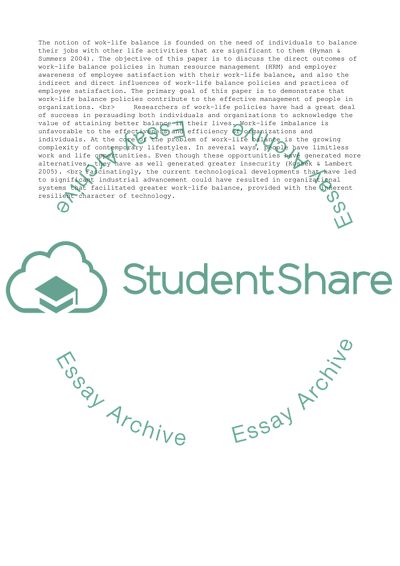Cite this document
(“Work-Life Balance Policies: An Effective Way of Managing People in Essay”, n.d.)
Work-Life Balance Policies: An Effective Way of Managing People in Essay. Retrieved from https://studentshare.org/management/1557538-work-life-balance-policies-an-effective-way-of-managing-people-in-organizations
Work-Life Balance Policies: An Effective Way of Managing People in Essay. Retrieved from https://studentshare.org/management/1557538-work-life-balance-policies-an-effective-way-of-managing-people-in-organizations
(Work-Life Balance Policies: An Effective Way of Managing People in Essay)
Work-Life Balance Policies: An Effective Way of Managing People in Essay. https://studentshare.org/management/1557538-work-life-balance-policies-an-effective-way-of-managing-people-in-organizations.
Work-Life Balance Policies: An Effective Way of Managing People in Essay. https://studentshare.org/management/1557538-work-life-balance-policies-an-effective-way-of-managing-people-in-organizations.
“Work-Life Balance Policies: An Effective Way of Managing People in Essay”, n.d. https://studentshare.org/management/1557538-work-life-balance-policies-an-effective-way-of-managing-people-in-organizations.


